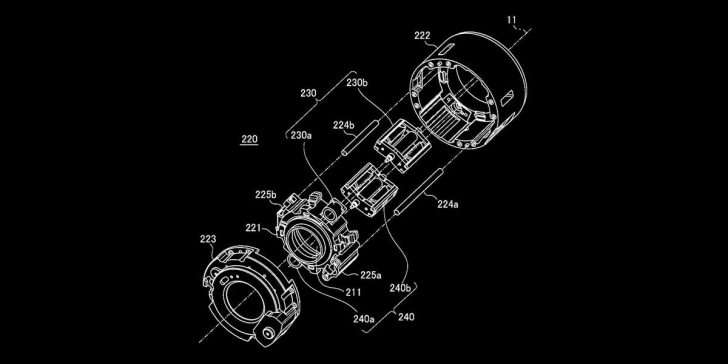It looks like Canon may be ready to jump on board with the likes of Sony, Fuji, Tamron and Sigma with the use of linear focus motors in future lenses.
Linear focus motors are a benefit to video shooters with their fine adjustment as well as quieter and smoother performance over Ring USM and STM motors used in Canon's current lenses. Linear motors also tend improve power efficiency.
An example of the use of a linear motor is a focus mechanism in a lens barrel. In the lens barrel, in order to focus on the subject at a desired position during shooting, a focus operation is performed in which the focus lens group inside the lens moves back and forth on an optical axis perpendicular to the image sensor of the camera. A linear motor is used to adjust the movement of this focus lens group.
https://asobinet.com/patent-application-for-canons-linear-motor-based-focusing-device/
You can check out the patent at the JPO here.


I have noticed the difference between my sony lenses and canon lenses. Primarily the "clicking" from the nano usm is a little annoying. I have yet to hear a sound from the GM's.
Speed I would say seems close but not the same (it's had to compare apples to apples since the lenses themselves are all different) but trying to compare similar lenses like the RF 24-70 2.8 L to the 24-70 2.8 GM II and the RF 70-200 2.8 L to the 70-200 2.8 GM II, I do notice the sony is snappier and near instant where on the nano usm you can almost see the focus shift.
For Primes, it's a little harder to compare because there is no RF 14 or 35mm to compare too.
The 50's are also hard to compare because the RF has an extending barrel for focus which give it a disadvantage in focus speed.
Either way this is nit picking and comparing the two together. Nano USM is still very fast and accurate and works like a charm, but friendly competition is never a bad thing.
Sony XD Linear Motors, Nikons SSVCM, Tamrons VXD, and Sigmas HLA all use voice coil linear motors. There are advantages to voice coils, and disadvantages. The advantage is that if well specced, they can move faster, more silently, and more accurately than Nano USM. The disadvantages are that they require power to hold their position (no power means free floating focus group), and they are more limited in their length.
Canon has not mentioned the TYPE of linear motor in use in this patent, so it is most likely Nano USM until proven otherwise.
So thanks for confirming that though.
Here's what it says at Canon Europe: https://www.canon-europe.com/pro/infobank/usm-stm-lens-technology/
Like other USM units, the Nano USM motor has an elastic metal body, a ceramic voltage element and a drive unit. Sending current and varying the voltage applied to the ceramic elements creates two types of vibrations, which enable the motor to precisely control the speed and direction of the drive unit. However, the movement is linear rather than rotational – the lens focus elements are driven by a rack, with guide bars to control the forward and backwards movement. The outcome is smooth focusing with fine control over speed and near-silent operation.
Launched in October 2019, the RF 70-200mm F2.8L IS USM is the first lens to feature Dual Nano USM technology. It has two Nano USM motors, each driving different lens groups, working together to produce faster, more efficient focusing.
The announced future is already here...;)
I am not so sure that is much of an issue but I guess if the number of shots keeps going up it might become one.
The clicking gets a little annoying at times.
no way you can backtrack from what you wrote... you know you got it wrong... no harm in doing a mea culpa that you got it wrong :)
Also, the STM motors in video mode are fairly quiet as well. Glacial, but quiet.